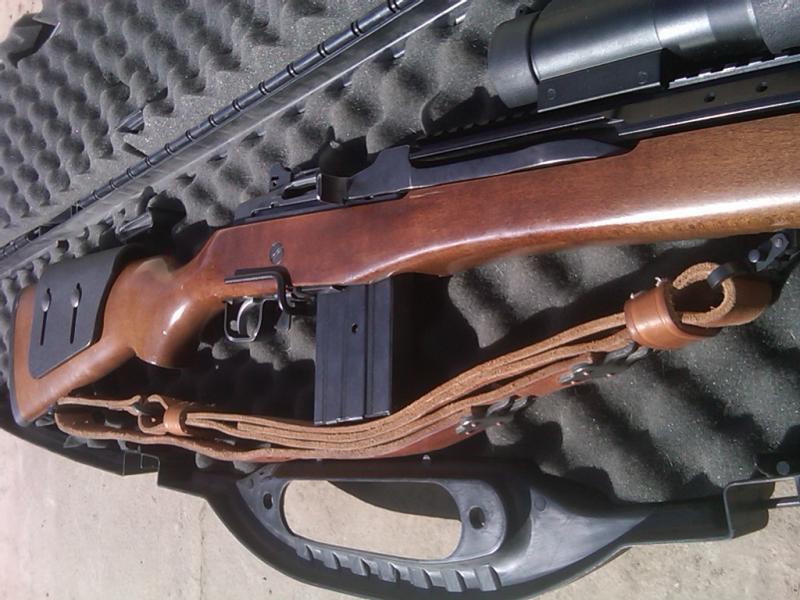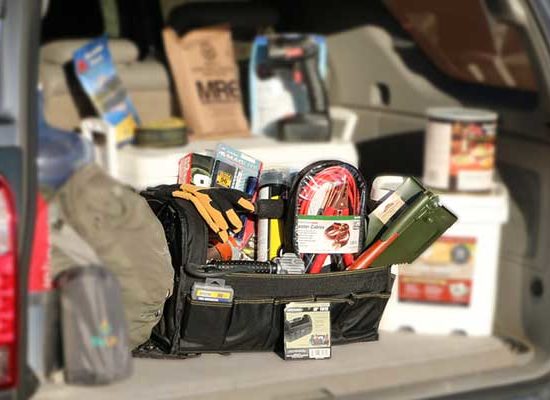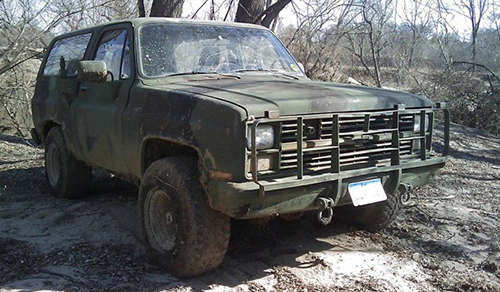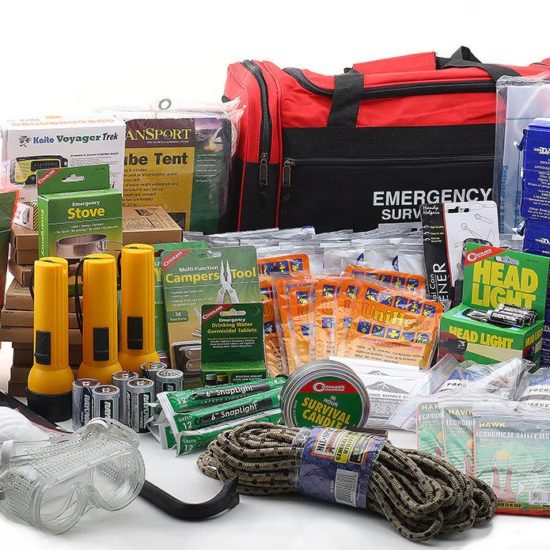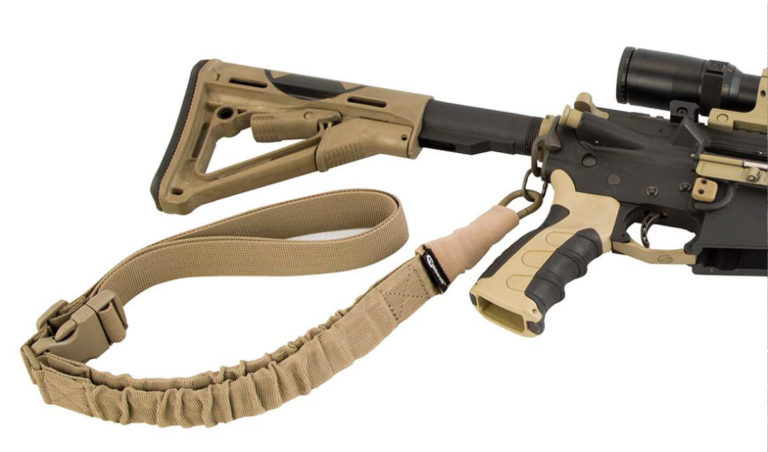
Introduction to Slings (Part 2)
Last time we looked at the uses, types and history of slings. Now let us consider how to choose a sling and look at some choices with potential for tactical use.
How to Choose a Rifle Sling
As is usually the case with anything, the first step in choosing the best rifle sling is to decide what you are going to use it for. For a sport hunting arm, any old carrying strap will do. A padded one will be comfortable for those long treks, and these are available in nylon and leather. I tend to prefer the nylon ones as being more reasonably priced. If you are doing competition shooting, go with what the rules of your events specify; a M1907 model sling might be optimal for some types of competitions. For a tactical rifle or shotgun, a single point/two point convertible is often a good choice.
Slings are available in various widths. I would tend to avoid 1″, the most common, when possible. This is just because the narrower the strap, the more concentrated the weight applied where it contacts the body. Of course, a sporting sling with a wider padded part would eliminate this concern, and in my day, I found Uncle Mike’s padded slings to be quite acceptable. They do not appear to be sold these days, but if I were looking for one, I’d check out Butler Creek (same parent company as Uncle Mike’s), who appear to have some models which would be equivalent or even better. For slings without a wide pad, the 1 1/4″ sling would often be a better choice than the 1″.
Wider slings are available, but usually only with clips for ring mounts. For a tactical sling, I’d prefer 1 1/2″, and for a heavy tactical gun, I might even search for a 2″ sling. There are a few padded tactical slings, but my theory is that if they were really superior, there would be a lot more of them.
When considering any sling, check out the “fixed” adjustment. You want a sling which is big enough for any likely use of yours, without being too big for any use. The fixed adjustment should be moderately easy to set, but more importantly, not move accidentally. Some slings also need to have a “rapid” adjustment to switch between modes, separate from the fixed adjustment for size. Make sure this adjustment mechanism is conveniently located, easily operated, and stays where you put it when it is not deliberately being moved.
Tactical Sling Choices
As mentioned, sport slings are not terribly different from each other, and competition slings tend to be specified by the competition. The real excitement is in the tactical sling arena; usually a single point/two point convertible sling is a good choice, but there are a bunch of them, ranging in price from cheap ones from China to the $100 range. Looking for one appropriate for a tactical shotgun, I set an arbitrary limit of $60. The first one I considered was the Magpul MS3 or MS4, because they are a good company, and frankly, since they have their own QD clip, they “must know what they are doing”. But they use 1.25″ webbing, which might be a bit narrow for such a heavy gun. A very attractive one was the Cetacea Rabbit with two rapid adjustments instead of just one, but the 1″ webbing might be even less appropriate than the Magpul. Finally, I found a 2″ wide one, the e-RUSH (enhanced Rapid Urban Sentry Hybrid) from Urban-E.R.T Tactical. This is their top model, with all the sling bells and whistles. They have a lower level model for economy and even a 1″ version if you like the style but don’t need the 2″ width.
Let’s take a closer look at the e-RUSH and the MS3.
e-RUSH sling
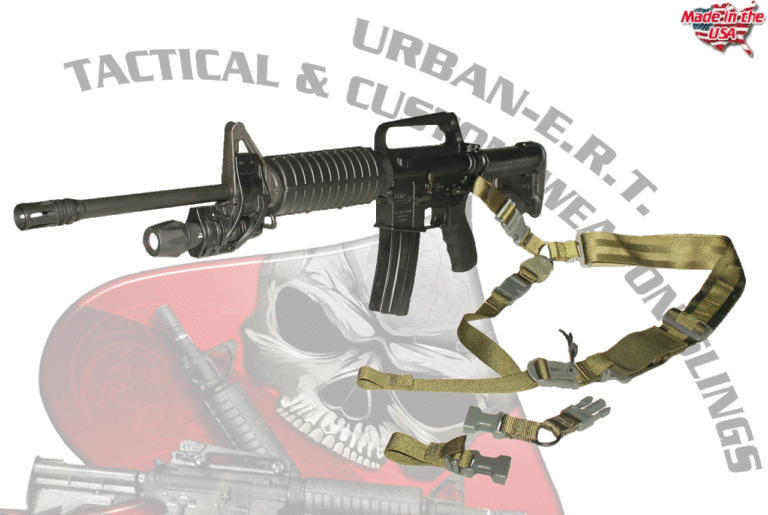
With a strap width of 2″, this is one of the better choices I’ve found for heavy long guns – if it will fit you. Fixed adjustment is a simple sliding buckle providing one foot of adjustment. The captured buckle means you can’t make it any shorter than two feet, and a very long label on the strap discourages you from getting three inches more than three feet; there is a flat elastic section included. Unlike the “bungee” section which is a more common methodology, this is at the forward end of the strap rather than at the butt end. This is so that if you jump down and the weight of the gun stretches the sling downward, the elastic does not bring it back up to smack into your face. And it is more comfortable and useful for chest expansion if you are breathing heavily. The straps and attachments on each end of the 2″ strap are standard 1″. With this and all the hardware, this means that using the strap like a normal sporting sling, for carrying (muzzle up) or shooting support, is not comfortable, and the moderate adjustment variance makes it too long for this anyway. With all the hardware it has, you might be able to disassemble it and “build” it for “normal sporting” use, but it might still be too long and even if not, it hardly seems worth the effort.
On the butt end of the sling there is a locking strap system which allows you to attach a female buckle and ring, a female buckle and male buckle, or a female buckle and push button QD socket. The female buckle is where you plug-in the male plug which is attached to the mount on the gun, and the ring/male buckle/QD socket is where you attach the forward end of the sling to convert it into a one point sling. You can also attach a “CQB” adapter here instead, which eliminates the two-part buckle between the sling and the gun so it rides a few inches higher. That is, the gun adapter is connected directly to the sling rather than through a quick disconnect buckle.
Read More: Top 5 Firearms you need to get your hands on now!
The other (forward) end of the sling has the same locking strap system. This is attached to a fancy two function buckle. On the top end, there is a small tab, which if you pull sharply, causes the buckle to come apart, giving an emergency exit from the sling. The other end is a fast adjustment buckle, which allows you to tighten the sling by pulling on the protruding strap end, or loosen the sling by lifting up on the end of the buckle. This gives you a rapid adjustment of sixteen inches. On the other end of the rapid adjustment strap is the female buckle which attaches to the male plug connected to the forward sling attachment. The rapid adjustment strap is handy to pull on to cinch up the system, but when the sling is cinched tight, that strap end can flop around.
Which QD adapters are available, you ask? All the major ones are available, except for the Magpul one. You can choose between the stud, the push button, the Mash clip, the HK clip, a locking strap (for a slot or fixed ring), and a version of the Universal Wire Loop using paracord instead of the stiffer and thinner wire (which may make it less versatile). In order to use the ring to convert from two point to one point, you will have to use the Mash or HK clip on the front, and to use the QD socket to convert to single point, use the push button QD adapter on the front. Or if you have the male plug for single point conversion, just unclip the front female buckle from the adapter in use, and fasten it to the male plug near the butt end. This latter configuration allows you to have a female buckle attached to your belt, which allows you to fasten the male plug attached to adapter at the front end of the gun to that buckle to secure the front of the gun when quick access is not needed.
I’m quite large, and at the three-foot adjustment, it is just the right size. If I had armor or a thick vest, it might not be long enough. Functionally, this works quite well in one point mode with a shotgun or rifle with a pistol grip or any stock. In two point mode, it is great for a pistol grip shotgun, but if the shotgun has a full size stock and a shell saddle, the butt end kind of sticks out (because the shell saddle is between the user and the gun. The adapters which Velcro around the stock and the forearm to provide sling mount points on guns which don’t have them, or have them only on the bottom, work very well, except that putting it on an AR style stock prevents you from operating the charging handle, so should be avoided.
This system seems to meet my requirements for heavy tactical weapons, and is versatile enough that one sling can be used on any one of a variety of firearms.
MS3/MS4 sling
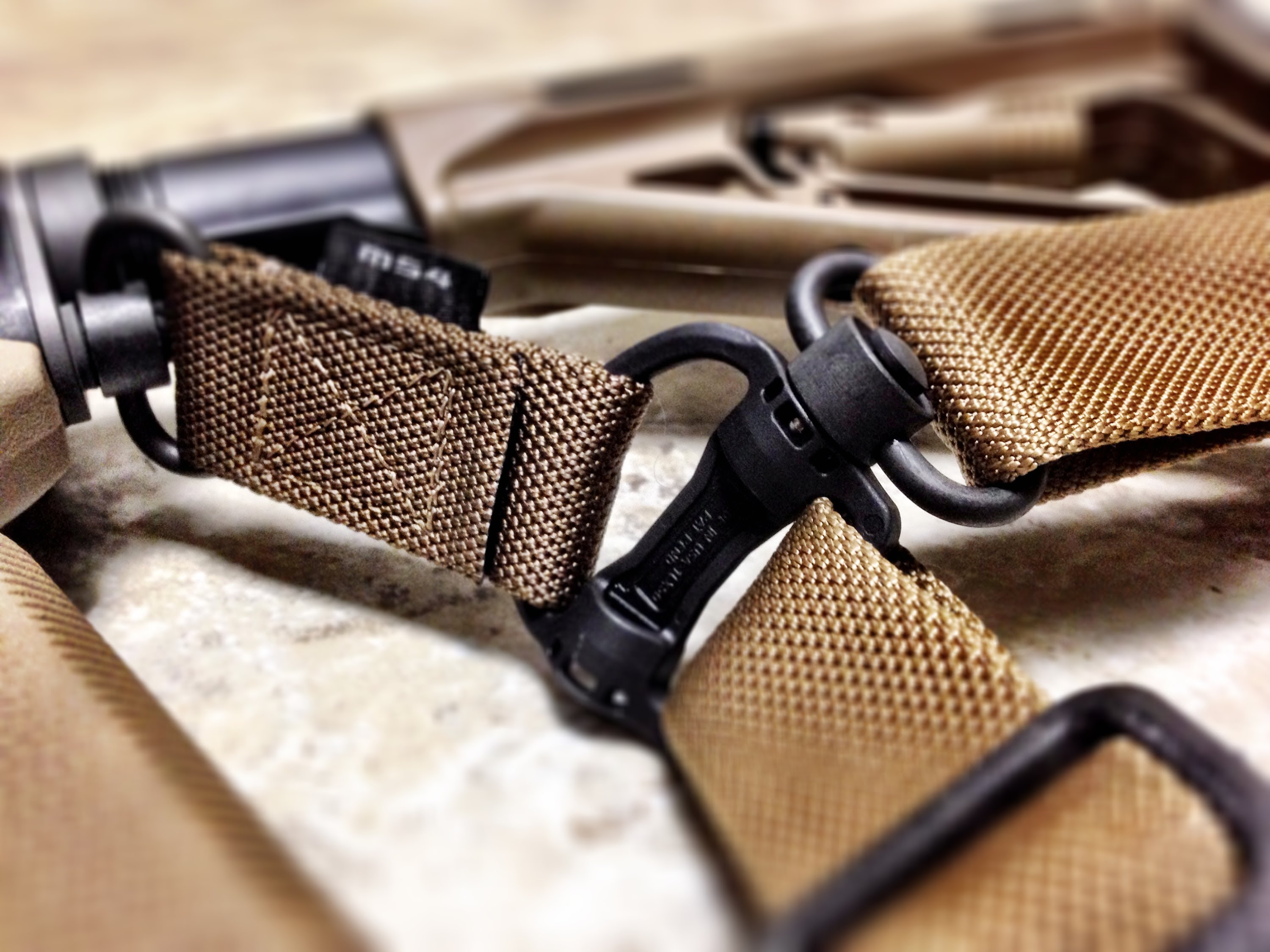
This is kind of standard and simple in design. There is their brand clip (MS3) or a QD clip (MS4) on the butt end, connected to a ring or QD socket. Then the main strap to a buckle tasked as a double loop. The fixed adjustment for this strap is two slide buckles, giving you about three feet of adjustment and more if you get creative. The secondary strap gives you two feet of “instantaneous” adjustment and has another Magpul clip or a QD clip, and that’s it. Simple and clean, it is more streamlined than the e-RUSH, but not as versatile. You can also get a MS1 sling and upgrade it to a MS3 or MS4.
It is designed as a two point to one point convertible which means it can provide fast access, but no support for increased accuracy. But it can be “tricked” into working as a standard sling, allowing the use of the “hasty sling” technique as well as muzzle up carry. You’ll need a ring or QD socket forward and near the butt. Rings are rare at the butt end, but you can install an unattached QD clip back there and that works adequately as a ring for the Magpul clip. Then reassemble the fixed adjustment system to be much shorter (there will be a long strap end to feed back into the buckles) and it actually works fairly well for “hasty sling” and “normal” carry.
In its intended modes, it works quite well, with one big advantage and a couple of minor disadvantages. The big advantage is the Magpul connecting clip. This attaches to the ring parallel to the strap, rather than perpendicular like the HK or MASH clips. And it doesn’t twist or rattle or slide around like those others. With the cross lock, it is secure, yet very easy to attach or detach. On the downside, there is no elastic element in the strap, so if you have it cinched up tight, you might restrict your breathing a bit. The width is 1 1/4″ which is better than 1″, but not as good as bigger. A heavy weapon gets a bit uncomfortable when hanging in single mode for a long period of time, which may not be normal usage. And the quick adjustment tends to adjust itself sometimes. Minor negatives, and for a medium or lightweight weapon, this is a pretty good choice. There is a padded version of the MS1, which if upgraded to a MS3 or MS4 equivalent, might even be acceptable for heavy weapons.
Conclusions
Personally, I’d have any long gun I owned set up for a sling. When you find you need a sling, it is often too late to install one. Although I would be too cheap to have a separate sling for every gun, I would have at least one of every type of sling I would need. I would install studs or QD sockets in every hunting rifle and shotgun, with a nylon padded sling (or two) with the matching clips. For any competition gun, I’d probably stick with the sling attachments which came with it, and have a 1907 style leather sling (the one from Brownells used to be hard to beat) and any other sling required by a match I might go to. For a tactical weapon, I’d have an ambidextrous mount between the stock and the receiver, and a mount in front which either was ambidextrous, or could easily be removed and mounted on the other side, as well as standard mounts forward and at the butt if practical. My choice for a heavy tactical sling would be the e-RUSH sling, and I’d be tempted to get a couple of Magpul clips and integrate them into the e-RUSH since I like them much better than MASH clips and slightly better than QD clips (I won’t have anything to do with HK clips). If I had several tactical weapons, I would also have a Magpul sling for the lighter ones.
Are there other slings besides Butler Creek, Brownells, Urban-ERT and Magpul? Of course, there are many; some similar and a few significantly different. There might be better ones, and from my experience, I can guarantee there are worse ones. Some are cheaper and some are more expensive; more expensive ones are sometimes better than cheap ones, but not always. There is often a choice of colors. Pick the one (or more) which is suitable for your needs and budget.


